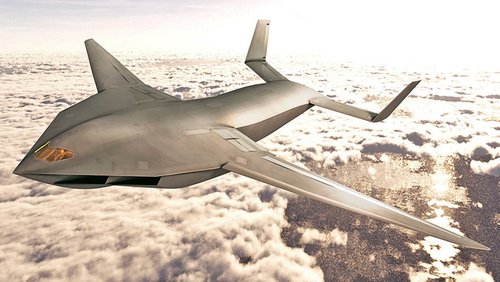RLBH #20: nail down the dispersal plan for the 240-aircraft force. JFCF #19, dispersal.
We are allowed to be confused as there was no Authorised (=Treasury-funded) Plan, only aspirations. 240 Medium Bombers was always that. Every A.M. Requisition for a batch of Mediums was argued over cost and need. The only reason RAF received 104 Valiants was that Minister of Defence Shinwell extracted 50% of their cost from US. Sandys tried to do that for Mk.2 Vs, 22/3/57, and received "a blunt rebuff" I.Clark,Nuc.Diplomacy & the Special Relationship, OUP, 94,P.43. Treasury Approvals (for anything) were released in budget silos i.e.: the Bricks & Works chap funded Operational Readiness Platforms (ORPs); the In-Service ("ownership") chap funded Rapid Start (RS) Engine and Blue Steel QRA mods. There was no one chap for Readiness. So we dribbled, un-joined up.
RAuxAF was disbanded 10/3/57, Fighter Cmnd. (FC) reduced to a few Javelins - 9/64, a few Lightnings >10/60 because they+Bloodhound Ring of Steel could cover MBF/SMF Launch on Warning: A.M. brief to new SoS/Air Amery,10/60: we need FC “to police the skies against intruders (not much more.) defensive side (relied on dispersal)” Move to Sandys White Paper,M.D.Kandiah/G.Staerck,ICBH/KCL Seminar 7/88, 2002,Pp44/5. But:
- we had no Warning until 29/8/63 - CIA/Hiller KH-5 Argon ELINT satellite, and 17/9/63 - BMEWS/III, Fylingdales live, limited until Elliott/RRE data-handling Project Legate in 1964 gave 8 mins.{ICBM/ex-USSR}/2½ mins. {IRBM/ex-DDR}. Lovell Telescope, Manchester Uni. was brought to “a state of military vigilance” in 10/62 Cuban Missile Crisis. sas-space.sas.ac. uk/3387/1/Journal_of_International_History 2000_ n3_Twigg_and_Scott. 26/1/12, pp.3/4.
Upto 72 V-Bombers, 1/10/58-17/3/62 had US Bombs, so could not disperse (the USAF Munitions custodials issue). Blue Steel must be close to its drainage pits on Main Base. Valiant first rehearsed dispersal, e.g.: Tarrant Rushton...they had no Bomb, for 2 reasons: RAF never carried potential Broken Arrows; and until Yellow Sun 2, 5/61, they had none operable remote from Armourers. Red Beard should always have been so cosseted, but must be dispersed from vulnerable Akrotiri from 28/11/61: only 24 Valiant carried it in UK, 1/9/60-{last:} 30/9/62, probably to be stream-launched from Wittering.
USAF/SAC dispersed in US very visibly, for Cuba, 10/62: PM Macmillan has been commended for his measured sanity in not also dispersing, a provocation. He did not because he could not. RAF could not scramble rapidly until RS mod was in Vulcan 2 (32 a/c by 12/63), and ORPs were ready (1st./Waddo, 2/63). No ORP: so large impediments at runways' ends to ground the day's business - bad for Fighter QRA or MR/ASW Forces. Ringway had an MBF Awayday. The quickest way to generate these a/c was streamed from Main Base, launched on a calm judgement of "the position". It would not be a British First Strike if we recalled the Demonstration. Dispersal seemed such a good idea...but it was valid only for a/c (and Bombs) with some semblance of reliability - so WE177B from 9/66. How would groundcrew ever get to Machrihanish?
57+ dispersals were never more than pipe dreams. The best I have been able to assemble, such as from real people remembering on Pprune &tc is:
Coningsby Wing Vulcan 2: c.8 Yellow Sun 2: (7/62)-11/64. (dispersal sites same as Cottesmore below?);
Cottesmore Wing Victor 1: 16 Yellow Sun 2, (9/62)-9/64; Vulcan 2: Yellow Sun 2, 11/64-9/66; WE177B, 9/66-2/69: Ballykelly, A&AEE Boscombe D, RRE Pershore, Leconfield, Lyneham, St.Mawgan, Valley, RNAS Yeovilton;
{Honington Wing Victor 1: 16 Yellow Sun 2: (1/7/61)-6/11/65 : and: .
{Scampton Wing {Vulcan 2: c.11 Yellow Sun 2}: (1/61) and (6/62-12/62): RAE Bedford, RNAS Brawdy/Lossiemouth, Kinloss, Leeming;
Waddington Wing 24 YS2: Vulcan 1: (1/4/62)-late-67; Vulcan 2: 1/7/68-30/5/68: Filton, Finningley, Leuchars, Machrihanish, Manston, Wattisham;
Wittering Wing {Victor 2: c.8 Yellow Sun 2}: (mid-62 - late-62: probably stream-launched from Main Base).
NB ( ) dates precede ORPs; { } Sqdns. with pre-Blue Steel a/c accessed YS2, though how "operational", recent, they were is unclear.
H.Wynn, RAF Strategic Deterrent Forces,Pp302/304/339; Agar/Hughes,P236, in R.Bud/P.Gummett,Cold War Hot Science,Harwood,1999; B.Clarke,4Mn.Warning, Tempus,05,P82; much in (our) CJ.Gibson, Battle Flight, inc.P.48.



